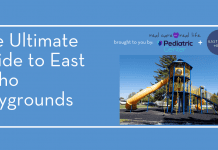If you’re anything like me, you obsessed over your child’s development (especially your first child, amiright?) I remember staring into my son’s face trying to figure out if he was smiling or not when he was just a couple of weeks old. I obsessed over rolling, sitting, walking, and talking. I panicked whenever it seemed that he wasn’t on track. With my second child, we had a lot of issues getting her to eat AND she was slow to talk, so I had a lot of nervous conversations with her doctor and, ultimately, an occupational therapist. In every case, it’s important to be reliably informed and to take early intervention when necessary.
Autism is one condition that generally shows itself quite early on and indicators can often be seen by the time a child is 2 or 3 years old. It is known as a spectrum disorder because it refers to a range of conditions, so consequently, there is a range of signs that can indicate if your child has it. However, not all children with autism demonstrate all of the signs, and many children who are not on the spectrum may show a few. Professional evaluation is crucial if you are at all concerned about your child’s development.
We talked to Alix Buchanan, a speech-language pathologist at Eastern Idaho Regional Medical Center, and she gave us some risk factors to look for that might indicate your child is at risk for autism spectrum disorder. You can also take this awesome online screening questionnaire that will let you know if further evaluation might be needed (many pediatricians will use this checklist or something similar at your child’s regular wellness checks). Remember that all children develop at different rates and the most important thing is to talk to your child’s doctor if you have any concerns! The specialists at EIRMC can meet with you and evaluate your child.
By 6 months
- Few or no big smiles or other warm, joyful, and engaging expressions
- Limited or no eye contact
By 9 months
- Little or no back-and-forth sharing of sounds, smiles or other facial expressions
By 12 months
- Little or no babbling
- Little or no back-and-forth gestures such as pointing, showing, reaching, or waving
- Little or no response to name
By 16 months
- Very few or no words
By 24 months
- Very few or no meaningful, two-word phrases (not including imitating or repeating)
At any age
- Loss of previously acquired speech, babbling, or social skills
- Avoidance of eye contact
- Persistent preference for solitude
- Difficulty understanding other people’s feelings
- Delayed language development
- Persistent repetition of words or phrases (echolalia)
- Resistance to minor changes in routine or surroundings
- Restricted interests
- Repetitive behaviors (flapping, rocking, spinning, etc.)
- Unusual and intense reactions to sounds, smells, tastes, textures, lights, and/or colors
If you are seeing several indicators on this list that your child might be at risk, then do not panic! Research has shown that early intervention can improve learning, communication, and social skills, so you are doing the best thing you can do by talking to your child’s doctor. If you do get a diagnosis then the Autism Speaks website has a wealth of resources, including “100 Day Kits” for the newly diagnosed. These will help you learn more about autism, and will also give you details on how to access all of the services that your child needs. A diagnosis should be considered a positive thing since it will give you access to the resources and services that you and your child need. East Idaho Moms blogger, Valerie, has a great post about the positive things she discovered in the 3.5 years since her son was diagnosed with high functioning autism. It’s definitely worth a read!












